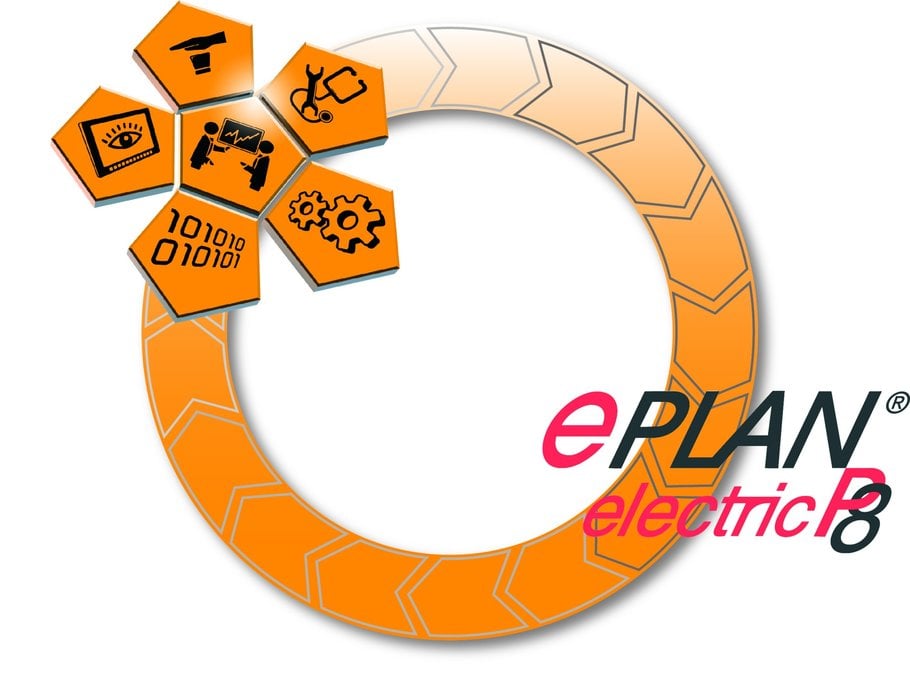www.magazine-industry-usa.com
13
'12
Written on Modified on
Developing with Automation Studio and EPLAN Electric P8
Traditionally, mechanical, electrical and software elements have been strictly separated and developed in a rigid sequence. Today, these disciplines are merging into a more integrated mechatronic approach. This not only paves the way for more efficient parallel development, but also simplifies coordination between mechanical, electrical and software engineers. This is why B&R integrates existing expert tools into the Automation Studio development platform via interfaces that ensure full transparency and functionality. Automation Studio provides all the functions needed to develop and configure an automation solution – such as those for creating control and HMI applications, linking motion control components, safety technology and much more. Expert tools are integrated via open, transparent interfaces to provide specialized functionality – such as EPLAN Electric P8 for electrical planning.

The seamless interaction between EPLAN Electric P8 and Automation Studio allows development to occur in parallel processes. "Our users can easily carry over hardware configurations and I/O mapping tables from B&R Automation Studio, reducing the time and cost of development by avoiding unnecessary input repetitions and redundant workflow," explains Rainer Burgard, key account manager at EPLAN. For the engineers involved, working with these two tools couldn't be easier. In the past, the hardware configuration had to be set up manually in the automation environment even though it already existed in its entirety in the ECAD tool. With Automation Studio and EPLAN Electric P8, engineers can generate both the hardware tree and the I/O mapping table at the push of a button. The corresponding process variables are automatically aligned and merged with existing variables directly in Automation Studio. An intelligent comparison feature provides a clear overview of which components were configured in the Automation Studio hardware tree and which B&R components are used in the electrical plan. The user can then synchronize the projects with only a few clicks of the mouse. B&R provides all the EPLAN macros needed to accommodate the various hardware components.
Synchronization through round-trip engineering
Intelligent import and export mechanisms streamline day-to-day workflow when using multiple software tools. However, B&R and EPLAN go a step further using round-trip engineering features to fully synchronize the electrical plan and automation project and ensure that both projects are always kept up-to-date. The advantage is clear: "Automated data exchange prevents errors that might otherwise occur in the course of interdisciplinary communication, thereby improving the quality of the end product. This contributes to reduced maintenance costs later in a system's life cycle," explains Heinz Fürnschuss, the technical manager at B&R in charge of developing the EPLAN interface. "Modifications can be made quicker, easier and less expensive since the system documentation and software are always current and synchronized."
The next generation of mechatronic tools
The fields of mechanical, electrical and software engineering are becoming intertwined in the pursuit of optimal efficiency. As a result, there is an urgent need to rethink conventional approaches to development tools. While tools of the past stood alone, with no means of communicating with each other but through simple import/export functions, future generations will interact transparently across open interfaces using intelligent synchronization mechanisms. This is the key step for machine manufacturers toward mastering interdisciplinary development and significantly reducing time and costs.
In the fields of electrical design and automation, B&R and EPLAN have set an impressive example of how two development tools can work together harmoniously – something made possible by a well thought-out concept and close cooperation between the two companies.
Highlights:
-Hardware configurations imported directly from EPLAN Electric P8
-Automatic alignment of I/O mapping data
-Consistent project synchronization provided by round-trip engineering
About the author:
Philipp Wallner has a graduate degree in electrical engineering with a focus in process automation from the Technical University of Graz and is a system architect responsible for strategic software development at B&R.
Captions:
BR1.jpeg: Close cooperation between B&R and EPLAN, together with a well thought-out concept ensure optimal development efficiency.
BR2.jpeg: The electrical plan and automation project are fully synchronized and always up-to-date thanks to round-trip engineering features.
Contact:
B+R Automation
Dipl.-Ing. Philipp H. F. Wallner, MBA
System Architect
Tel.: +43 7748 6586 4119
eMail: This email address is being protected from spambots. You need JavaScript enabled to view it.
B&R Headquarters
B&R Strasse 1
5142 Eggelsberg

